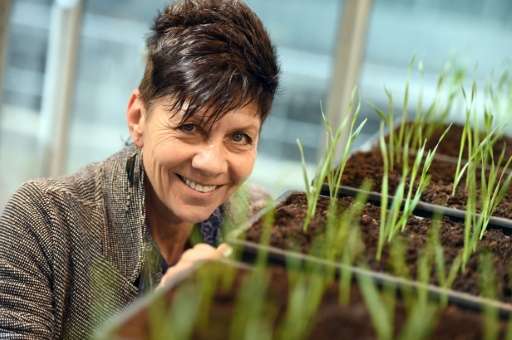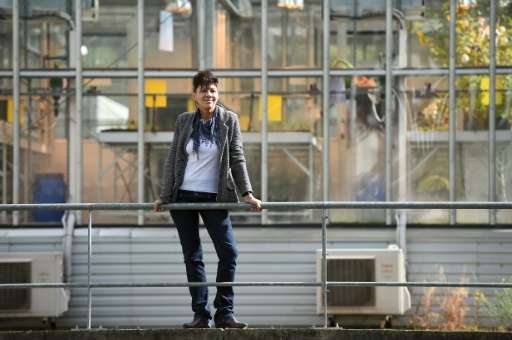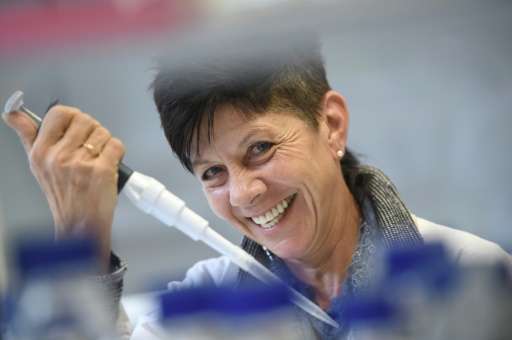'Resurrection plants' offer hope as climate turns hostile

As the race to adapt to climate change quickens, a South African scientist is leading global research into developing crops that mimic the extraordinary survival skills of "resurrection plants".
Jill Farrant, a professor of molecular and cell biology at the University of Cape Town, hopes that unlocking the genetic codes of drought-tolerant plants could help farmers toiling in increasingly hot and dry conditions.
With more than 130 known varieties in the world, resurrection plants are a unique group of flora that can survive extreme water shortages for years.
During a drought, the plant acts like a seed, becoming so dry it appears dead.
But when the skies finally open and the rain pours down, the shrivelled plant bursts "back to life", turning green and robust in just a few hours.
"I want to cater to the subsistence farmer, the person who wants to make enough food to live," Farrant, 55, told AFP.
"Farmers are becoming more and more dispirited, and droughts are killing them."
Perhaps the most well-known resurrection plant is Myrothamnus flabellifolius, which makes antioxidant chemicals to protect it during dry spells and is used in fashion designer Giorgio Armani's cosmetics line.
A life passion
A farmer's daughter, Farrant recalls stumbling across a resurrection plant as a nine-year-old and being amazed at its seemingly immortal properties.
"I wrote in my diary about a plant that had died and came back after the rain," she said.
She returned to the subject professionally in 1994, and has since become the world's leading expert in her field.

Environmentalists fear that more and more of Africa will be reduced to a dust bowl by global warming, with higher temperatures, reduced water supplies and population growth threatening to trigger worsening famines.
Climate change could reduce maize yields across southern Africa by as much as 30 percent by 2030, according to the UN Environment Programme.
Ahead of the United Nations conference in Paris at the end of November, countries are facing growing pressure to keep global warming below two degrees celsius (3.6 degrees Fahrenheit) above pre-Industrial Revolution levels by weaning their carbon-hungry societies off fossil fuels.
But, scientists say it is just as important to adapt to the new reality.
"Soil, cropping systems, farming systems—they all must have the capacity to recover from a drastic change in climate," said Rattan Lal, professor of soil science at Ohio State University.
"We should make agriculture part of the solution to our issues... the climate change problem is so huge everything should be on the table."
If successful, Farrant will follow in the venerable footsteps of earlier scientists who have saved crops from devastation by exploiting plants with specific strengths.
In the 1970s, US maize was rescued from southern leaf blight disease by incorporating resistant genes found in other varieties of maize.
Adapt to survive

Farrant has recently focused her research on teff, a grass native to Ethiopia whose seed has been used as a stable food in the region for centuries.
She hopes to make it more resilient by activating genes she discovered by studying resurrection plants.
"My main aim all along is to make crops that can improve drought tolerance," Farrant told AFP.
"If we get the money, I would say in 10 to 15 years we've got a product."
Experts warn that drought-tolerant crops are not a one-stop solution to the world's climate problems or even a safeguard against hunger.
"Food security doesn't only depend on climate, it depends on markets and trade, prices and access by households to food," said Jim Verdin, a drought scientist with the US Geological Survey based in Boulder, Colorado.
Still, Farrant—who won a UNESCO Awards for Women in Science in 2012—believes her work is a step in the right direction.
If she can harness the power of resurrection plants, farmers themselves may have a better chance of survival.
"If it doesn't rain, it doesn't matter, at least your plants won't die," she said. "The moment they get rain, they're ready to go."
© 2015 AFP



















